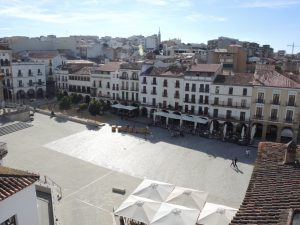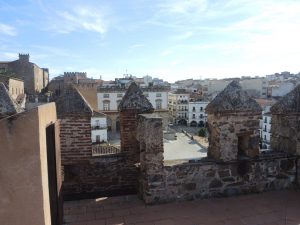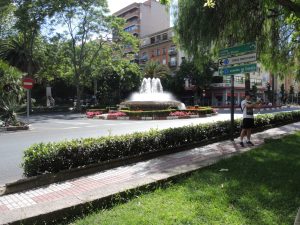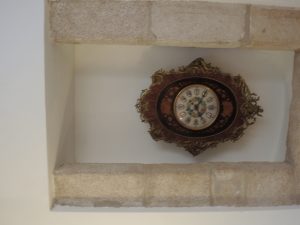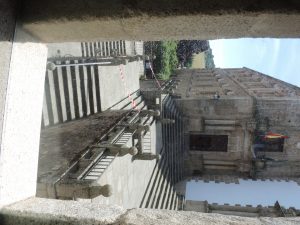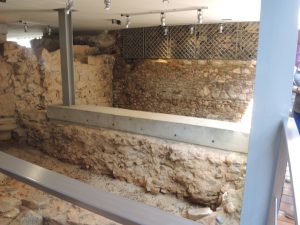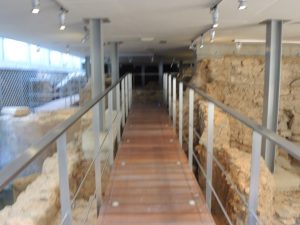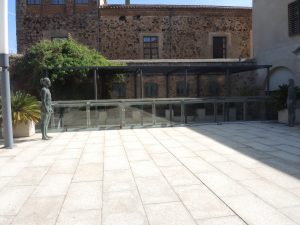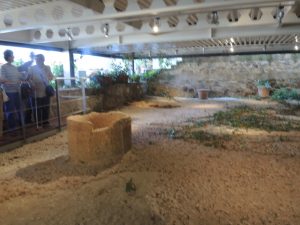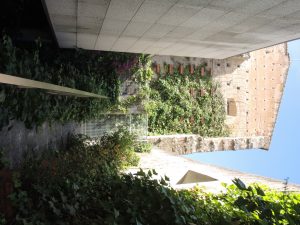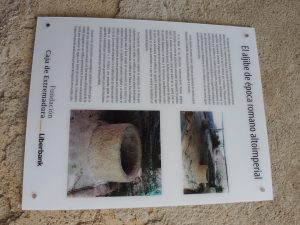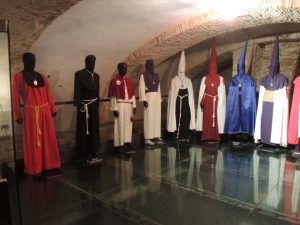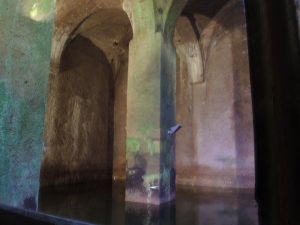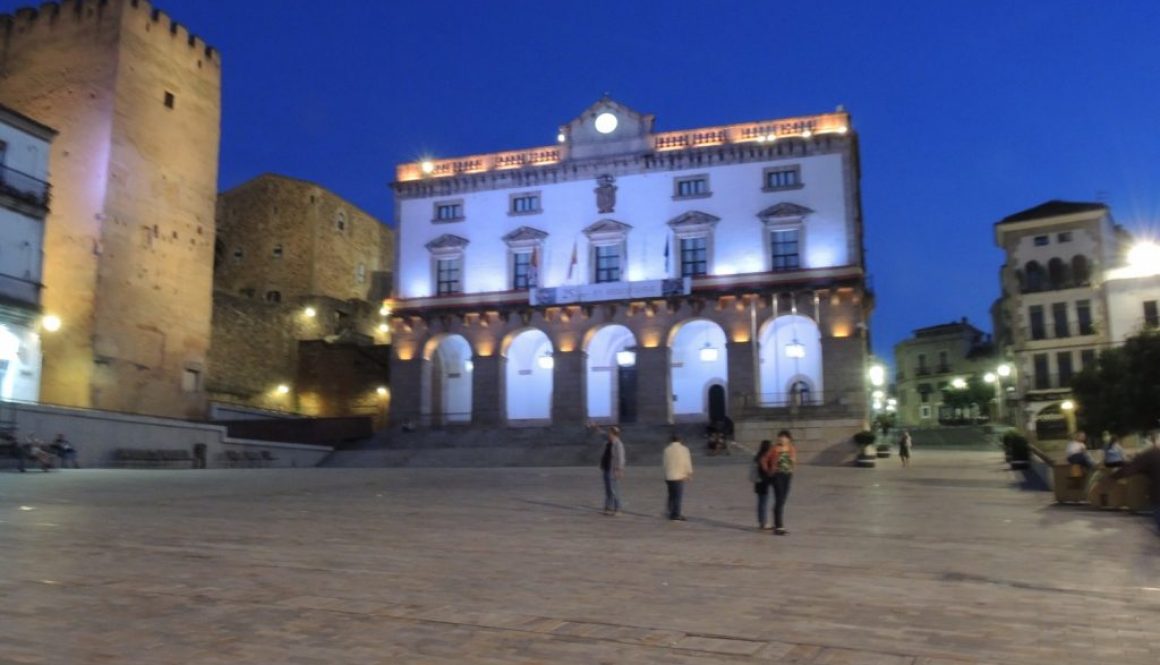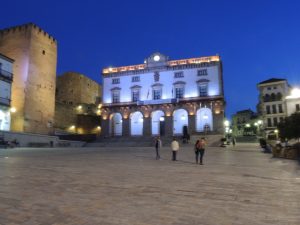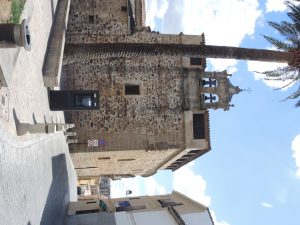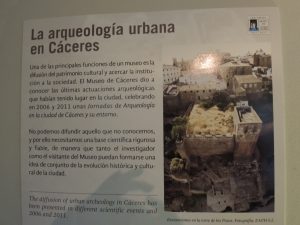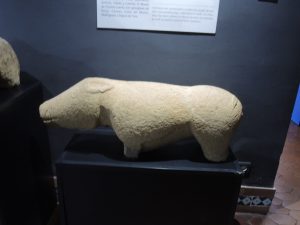Exploring Caceres
Today Pedro and I decided to start the day with a hearty breakfast at the Alfonso IX. Afterwards we walked on route to the cathedral of Santa María, cathedral built in the 13th century, with a gothic style, to meet a friend of Pedro, who had organized for us to join a small tour with retired teachers. There was a bit of confusion about the starting time as Pedro understood that it started at 10, when the start time was a 11am.
So, we decided to explore other sites. The first place we visited was the centro de interpretación de la Semana Santa en Caceres – a centre to better understand the meaning of the Holy Week festivities in Caceres. It was not just this, it provided a historical context of this celebration acros the centuries in part part of Spain. It also had wonderful aljibe – or cistern; an Arab construction to collect water. According to the guide book provided to us today, cisterns are distinguished from well by their waterproof linings.
I also took Pedro to visit the Caceres Museum, which I had visited early yesterday afternoon, prior to his arrival in this town. Afterwards we joined Pedro’s friend – Angela- tour group.
We first visited ruins of a number of old Roman houses. This’s was a guided tour conducted by a senior staff member of the local council’s arts and historical department. One of the interesting facts about this visit was that this site – which was discovered relatively recently- in the 80s – sits under a bank’s parking lot. It has been very well kept and meticulously restored. This tour provided us with a very interesting overview of the lives of the Romans in this area. It remained me of my visit to the city of Bath some 30 years ago, where we could see the underground Roman baths. Similar constructions could be seen here in Caceres.
Following this visit the group continued to walk towards the Fundación Mercedes Calle – Carlos Ballesteros. Mercedes Calle was a very wealthy local woman, from a very prominent local family. On her will, she donated her family home so that a cultural foundation could be set up, to enhance the “cultural experiences of the local population”. The guide indicated that it is solely dependent of the foundation moneys as well as donations- not receiving any public funds, so according to him it is very independent. The house – palace- is majestic both in size and style. We also learnt during this visit that many of the prominent families that travelled to The Americas in its very first voyages and made their fortunes there. Today we saw a very extensive Picasso, exhibition of lithographs, which showed his changing artistic styles during his life. A most enjoyable morning indeed.
Afterwards Angela joined us for lunch, and being a local, she knew the good places for lunch. So she took us to a most wonderful restaurant- which apart from having a terrific menu, it also had a particular thing, this was that the restaurant used to be a house, so each room had a different style. Angela was a wonderful and generous host. A great long lunch with good food, event better company and great tertulia- conversation.
Afterwards, as they say when in Rome, do as the Romans. Siesta time was calling, so back to Alfonso IX for a short rest.
Following the siesta time we went to a large park, as Pedro was wanting to buy cherries. We bought 2 kgs of very tasty cherries to not only eat tonight but also for tomorrow’s trip to Cadiz.
Afterwards we visited a couple of more sites.
First is was time to go inside the cathedral of Santa María. Its main feature is its alter, which is carved in wood. I was able to enter this church and climb its bell tower free of charge- by showing my Compostela- the St James’ Pilgrim credential.
We also saw the Iglesia de San Juan, a large majestic church built between the 13th and 15th century.
Finally we went to see the Centro de interpretación “Caceres el Viejo”, the centre for the understanding of the historical town of Caceres. This place provided us with a potted history of the development of Caceres across the centuries, we were also able to climb the Torre de Bujaco. This is an Arab tower which was built in the 10th century, and is only 10 meters by 10 meters.
This tower provides a majestic view of the plaza mayor.
Today’s visit to Caceres’ buildings was not only very informative, but joining Angela’s group, made it all the more interesting as well as provided a local touch.
By now 9 pm was approaching and so time to get ready for tomorrow’s trip to Cadiz.









